5 Classic Strength Moves That Work Better Than Personal Training After 40
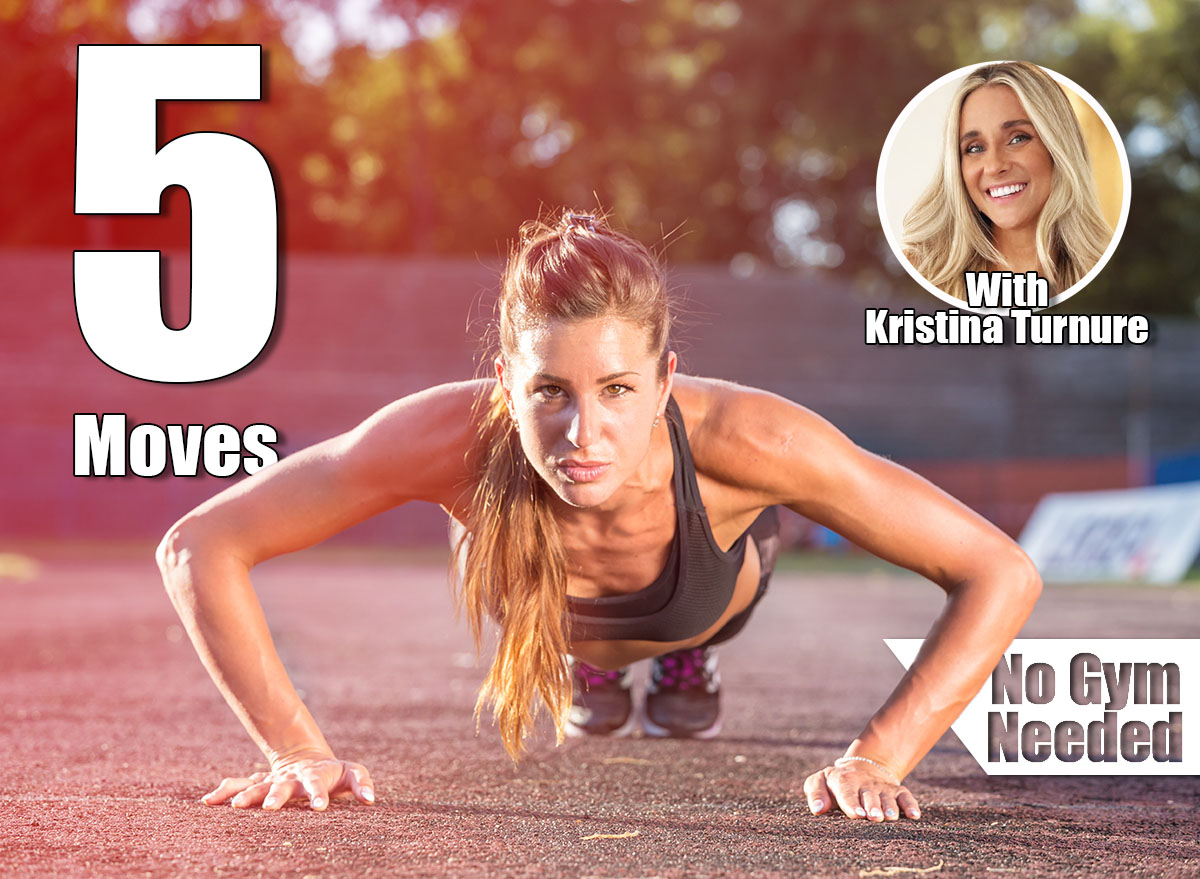
Real talk: Life happens. Between juggling work deadlines, social plans, and endless errands, heading to the gym for a personal training session quickly gets pushed to the back burner. But prioritizing health and wellness is a non-negotiable—especially after 40. So we’ve rounded up five classic strength moves that make for an ultra-productive workout. The best part? You can easily do these exercises at home or wherever you happen to be.
“As a CPT and women’s health coach, I believe that age doesn’t limit your strength potential, it just changes how we approach training,” says Kristina Turnure, MS, CPT, PN1, GGS-PPN, founder at Built & Balanced. “The exercises below are timeless because they train the patterns we use daily: squatting, pushing, pulling, hinging, and stabilizing. Over 40, the primary goal is moving well, staying strong, and keeping your body ready for daily living.”
These tried-and-true exercises will help you preserve and build muscle.
5 Classic Strength Moves To Do After 40
Squat
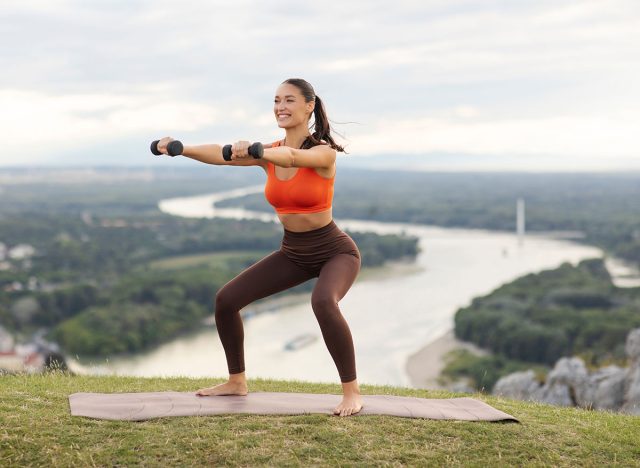
“Squats target your quads, hamstrings, glutes, and core, which are key muscles for mobility and longevity,” Turnure explains.
- Stand tall, feet shoulder-width apart on the floor.
- Extend your arms in front of you or place your hands on your hips.
- Bend at the knees and hips to lower into a squat.
- Descend until your thighs are parallel to the floor.
- Press through your heels to return to standing.
- Perform 3 to 4 sets of 8 to 12 reps.
- To modify this exercise, hold onto a chair or countertop for support, or decrease squat depth.
Pushup
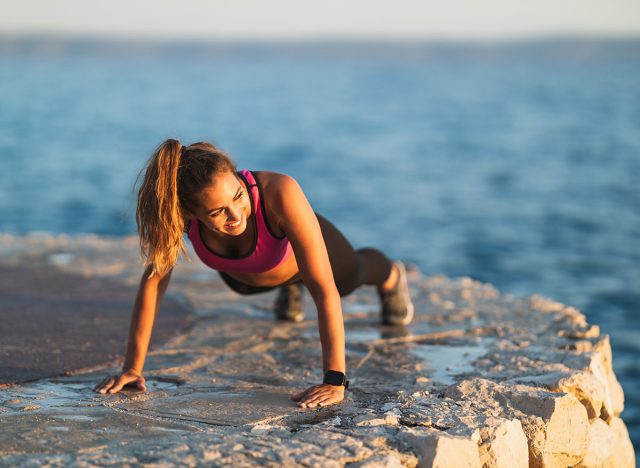
“Pushups strengthen the chest, shoulders, triceps, and core, helping maintain upper-body pushing strength,” Turnure says.
- Assume a high plank with your hands under your shoulders and your body straight.
- Bend your elbows and lower your chest toward the floor.
- Maintain a long, straight body as you lower.
- Press back up, straightening your arms.
- Perform 3 to 4 sets of 8 to 10 reps.
- To modify this exercise, elevate your hands on a workout bench or wall to decrease shoulder and wrist strain.
Glute Bridge
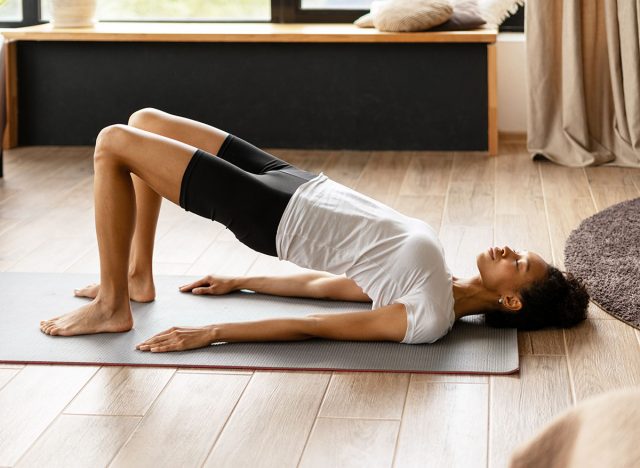
“Glute bridges support hip stability, glute activation, and low back health,” Turnure points out.
- Lie flat on your back with bent knees and feet hip-width apart on the floor.
- Press through your heels to lift your hips until your body forms a straight line from head to heels.
- Squeeze your buttocks, holding at the top for a moment.
- Lower your hips back to the start position.
- Perform 3 to 4 sets of 12 to 15 reps.
- To modify this exercise, perform single-leg glute bridges for a greater challenge.
Bent-Over Row
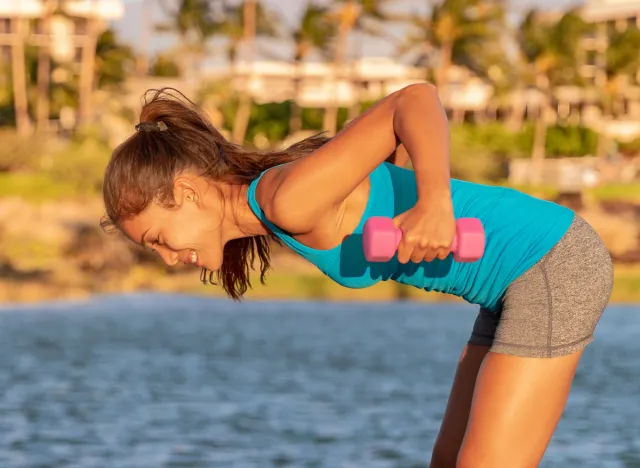
“Rows keep your posture strong and combat the ‘desk hunch’ by strengthening the back, shoulders, and arms,” says Turnure.
- Stand tall, feet hip-width apart, and a dumbbell in each hand in front of you.
- Hinge at the hips until your torso is parallel to the ground.
- Maintain a flat back and soft knees.
- Allow the weights to lower with your arms completely extended.
- Row the dumbbells up toward your torso.
- Lower to the start position with control.
- Complete 3 to 4 sets of 8 to 12 reps.
Plank
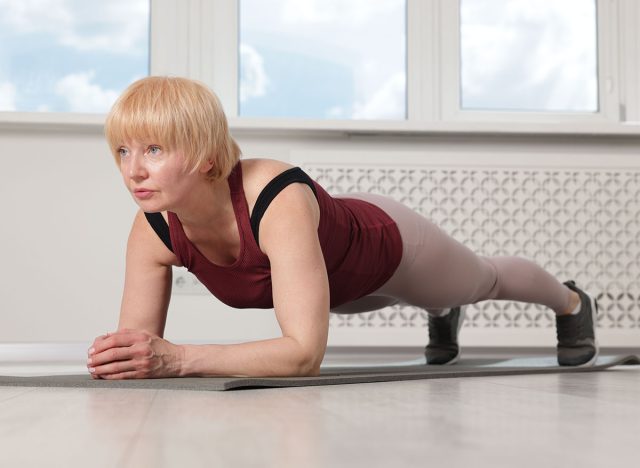
“Planks build deep core strength, spinal stability, and total-body tension,” Turnure explains.
- Place your hands under your shoulders.
- Press into the pads of your fingers and hug your inner arm toward your armpit.
- Walk your feet out to hip-width. Your body should form a straight line.
- Engage your abs, squeeze your buttocks, and pull upward through your quads.
- Hold your plank, completing 3 to 4 sets of 20 to 40-second holds.
- To modify this exercise, lower to your knees while maintaining a straight line from shoulders to hips.
Looking for more easy ways to lose fat? Here’s How Long Your Walking Workout Should Be To Shrink Belly Fat.